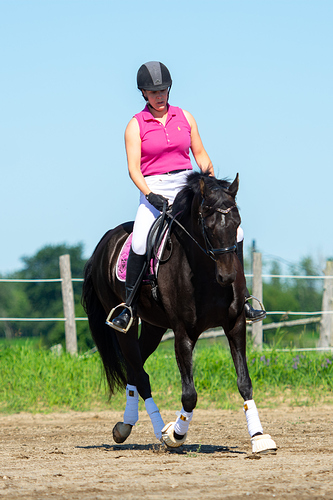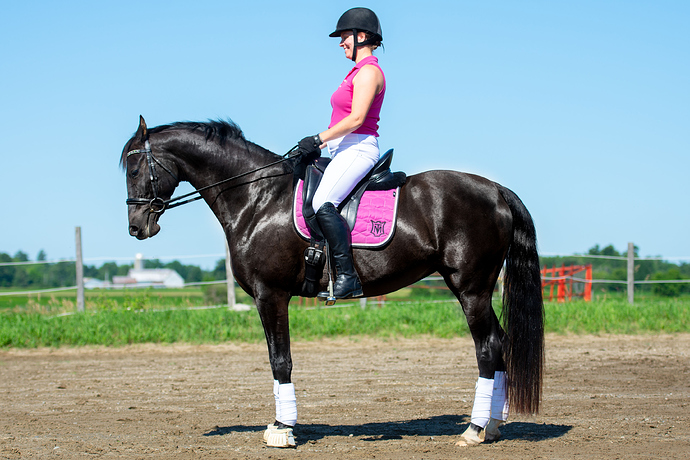Many decades ago I read something that Bazy Tankersly (owner of Al Marah Arabians) wrote.
She did NOT breed for flat croups as she thought that the flat croups were bad for horses that were supposed to be able to do dressage, among other things.
The last two decades or so the two Arabians I saw whose croups were flat also had the back bone swooping up, a good bit, to their flat, level croup.
There are some exceptions. If I remember correctly the Davenport Arabian stallion Prince Hal (Kuhaylan Haifi stallioni) had a flattish level croup and a strong, level back.
However one reason I go so into the pure Davenports are the ones that have what I call a “peaked croup” (not a jumper’s bump) with strongly muscled wide loins right in front of their croup which was flat, not level, sloping gently down to the highly set tail bone (along with BROAD knees and hocks, long sloping shoulders, usually a deep heat girth and good depth further back, plus the chiselled head, mitbah, and pretty ears.)
Charles Craver had a photograph of the Pure Davenport Kuhaylan Kurush stallion Tybalt doing a piaffe. I think he wrote that a dressage rider he knew had gotten into riding Tybalt.
This mania with a flat, level croup is one reason that I have come to the conclusion that ARTISTS, overwhelmed by the sheer beauty of the Arabians they saw, exaggerated some features, often to make a more beautiful and exotic picture. Lady Wentworth–if one looks closely at the pictures in her books one can see the brush strokes on the mitbah, head and croup, just to make the horse look more “ideal” as an model for paintings. Gladys Brown Edwards paintings made each horse, no matter what the photos show, look very similar to her drawing of an “ideal” Arabian used as a breed standard when I was young. This has breed standard with its ideals has been an unmitigated disaster for the breed IMHO. SOME desert horses had flat level croups, SOME desert horses had extremely beautiful heads, SOME desert horses had long necks, SOME desert horses had decent legs (at least before they lived in shackles), many had dryness and ears, BUT as a norm no desert Arabian horse ever had EVERY Arabian characteristic now considered necessary and no desert Arabian was “perfect”, they were horses after all, not angels.
You have to be picky, but there are probably more dressage suitable Arabians out there than you think. Unfortunately they are often subject to bad early training (like for halter), the English ones are often saddle trained for Saddle Seat classes, and many tend to have really sensitive mouths and absolutely no problems with going WAY behind vertical. Plus they can often process things quicker than normal horses. I always had to think ahead handling mine, luckily they had good dispositions and seemed to considered me as an amiable, harmless klutz (accurate) and forgave me my many mistakes.
If I got into dressage I’d look around, and I have no doubt that I would end up with an Arabian who would never have any hope of winning a ribbon in a halter class. I would be ecstatically happy if that imagined horse was a pure Davenport Arabian.








 It originated with my very first Saddlebred, who was herself a hell of a jumper and took me to provincial Champs in 2002.
It originated with my very first Saddlebred, who was herself a hell of a jumper and took me to provincial Champs in 2002. 